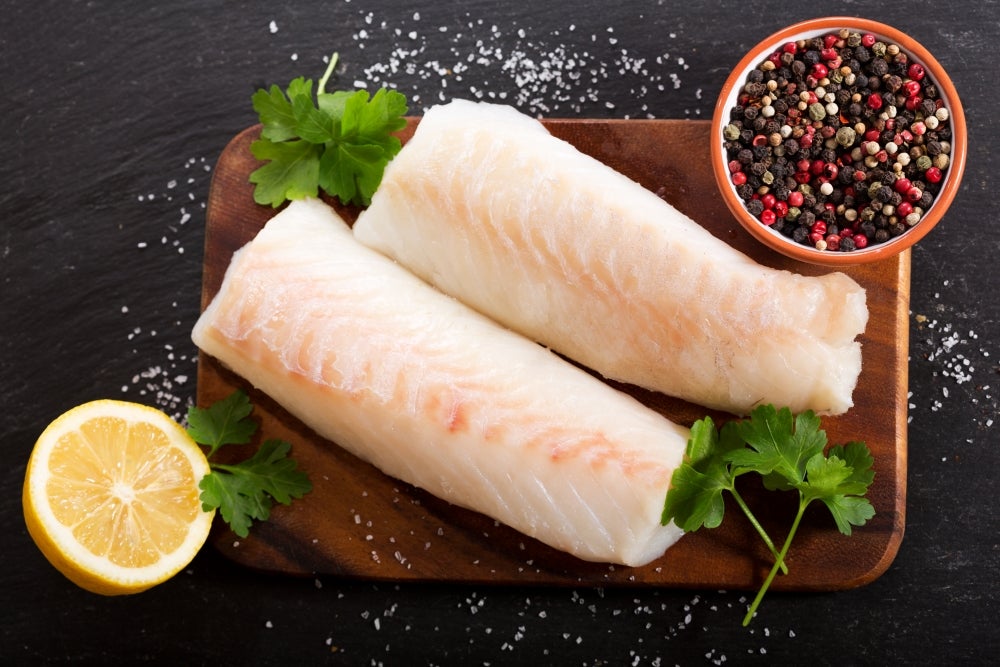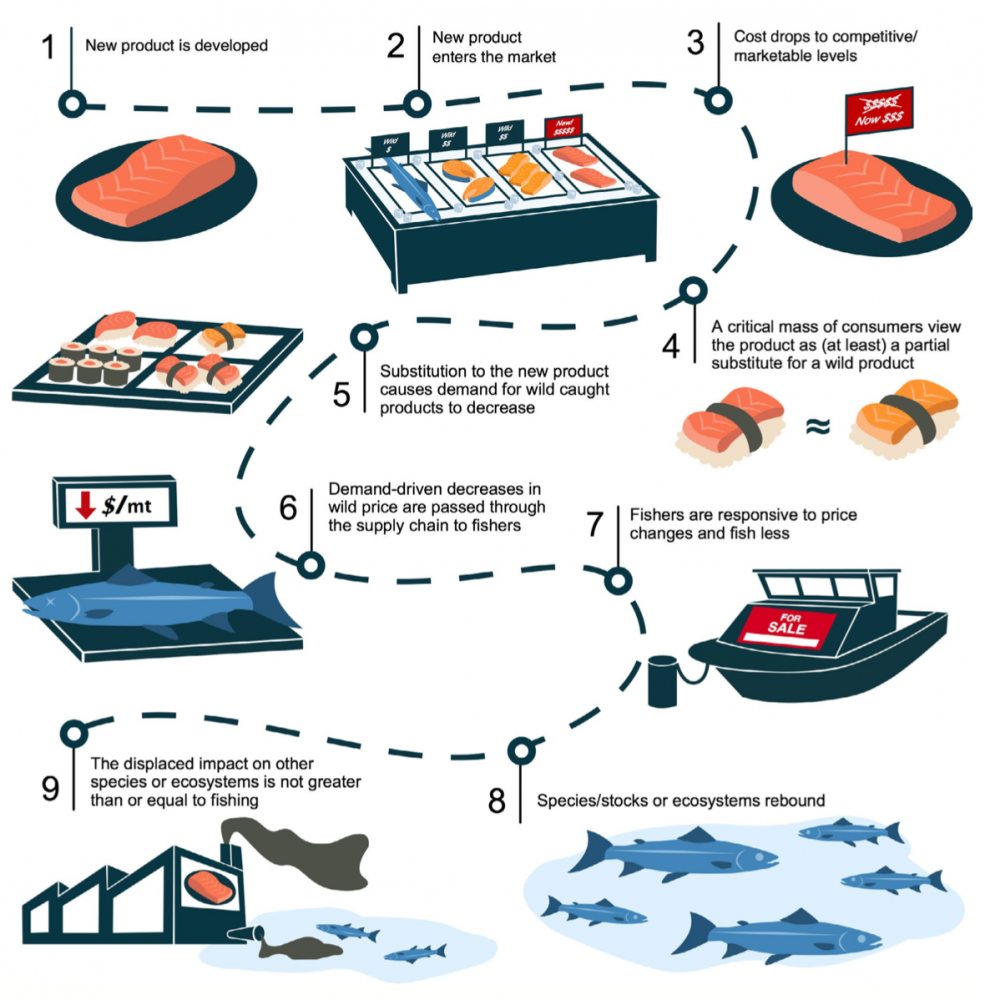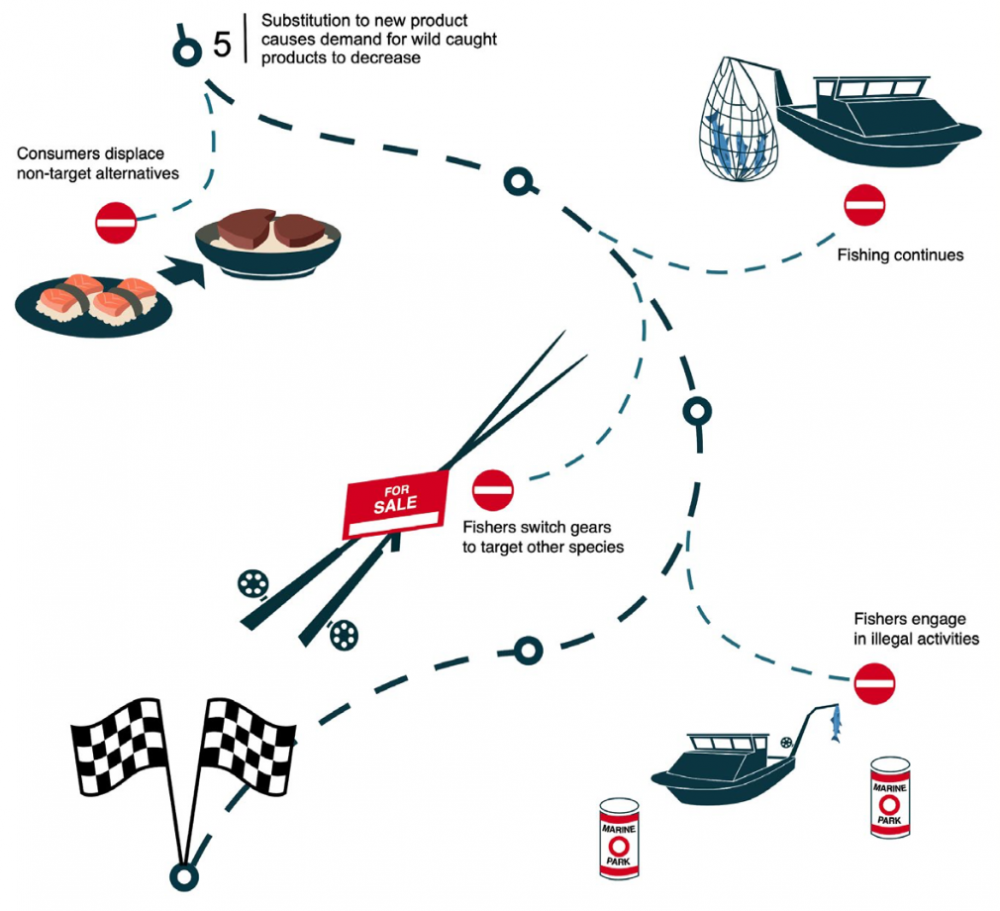
Cellular Seafood

Meat alternatives are officially mainstream. To wit, Burger King added the plant-based Impossible Burger to its menu nationwide in 2019, and McDonald’s plans to unveil its own McPlant in 2021. Alongside these vegetarian options, many companies are also working to culture meat outside of animals grown from cell lines. Proponents highlight a range of potential environmental and health benefits offered by this emerging industry, and several companies believe that these benefits could also play out with seafood.
A multidisciplinary team of researchers has taken a good, hard look at what it would take for cell-based seafood to deliver conservation benefits. They have compiled their findings into a paper in the journal Fish & Fisheries in which they lay out the road map to change, comprising nine distinct steps. The authors contend that cell-based seafood faces a long, narrow path toward recovering fish stocks in the ocean, with success ultimately determined by the complex interplay of behavioral, economic and ecological factors.
“The core question of our work was, can this new technology — cell-based seafood — have a conservation benefit in the ocean?” said lead author Ben Halpern, a professor at UC Santa Barbara’s Bren School of Environmental Science & Management and executive director of the National Center for Ecological Analysis and Synthesis (NCEAS).
A team of 12 researchers from UC Santa Barbara converged to answer this question, including economists, ecologists and data scientists as well as experts on fisheries, aquaculture and cell-based meat technology. They brought their expertise and the scientific literature to bear in order to flesh out the key steps along this pathway. Eventually they distilled it to nine significant phases.
The journey begins by developing a viable product and introducing it to the market, where it must then drop to a price competitive with existing seafood. At this point, a significant proportion of consumers have to adopt the new product as a substitute for traditional seafood. This is a key step, the authors said, and particularly tricky to pull off.

A nine-step path from the development of cell-based seafood to conservation benefits.
Photo Credit: HALPERN ET AL.
The first four steps may be sufficient for the success of a new product, but achieving conservation outcomes is a much longer process. The new product must drive down demand for wild-caught seafood, and the decline in price must pass through a complicated supply chain to fishermen. The drop in price then needs to decrease fishing efforts, which may or may not enable fish stocks to recover. Finally, the ecological impacts of producing cellular seafood can’t be greater than those of fishing, the researchers said.
Each of these steps brings with it a variety of hurdles, perhaps none harder than getting consumers to adopt the cultured seafood instead of buying wild-caught fish. Convincing people to take on something new and leave behind something old is a huge challenge, Halpern explained. It’s also an understudied part of this process, he added.

Jason Maier
Photo Credit: UC SANTA BARBARA
Of course, millions of dollars have gone toward studying product adoption and diffusion, coauthor Jason Maier pointed out. Researchers pore over the factors that influence a consumer's willingness to try, and ultimately take-up, a new product. The ability to sample the product, it’s relative advantage over the item it intends to replace, and how well it suits consumer habits and values all affect the likelihood it will be adopted, he explained.
“So why do we say it is understudied?” Maier asks. “Well, because previous research has primarily focused on only the adoption process.” But when it comes to environmental outcomes, substitution for the existing product is as important as adoption of the new one. For instance, many believed that farm-raised fish could release pressure on wild stocks. Instead, what researchers have seen are massive increases in seafood consumption with little direct evidence that aquaculture has reduced fishing pressure.

Some of the many roadblocks on the path toward conservation outcomes.
Photo Credit: HALPERN ET AL.
“The take home is that the pathway to get from creating this technology to more fish in the ocean is long and narrow,” said Halpern. “There are a lot of steps that have to happen and the path gets narrower and narrower as you go along. So it’s not impossible, but it is difficult for many reasons to get a conservation outcome, in terms of more fish in the ocean, from this cell-based seafood.”

Most of these hurdles apply to any consumer-driven intervention in the ocean. It’s challenging to harness people’s preferences, their buying habits, to drive change. “Trying to use consumer behavior as a way to influence the ocean requires a lot more steps than top-down approaches like regulations,” said coauthor Heather Lahr, the cell-based seafood project manager at UC Santa Barbara’s Environmental Market Solutions Lab (emLab).
Society also needs to weigh the costs and impacts of other conservation measures against new technologies like cultured seafood, she added. Strategies like fishery management and marine reserves have already proven their worth.
And while the technologies for culturing beef and swordfish may be similar, the context could scarcely be less alike. Seafood comes from hundreds of species, with different life histories, habitats and diets, Lahr explained. What’s more, consumers tend to group many species under a single culinary experience. “For instance, when consumers eat a fish taco they are expecting a white flaky fish which could be anything from farm raised tilapia to locally sourced halibut,” Lahr said. Compare that with beef, which primarily comes from one species: Bos taurus, the European, or “taurine,” cattle.
And, unlike terrestrial meats, seafood still comes primarily from the wild. Humans have less control over fish stocks than livestock, and fishing activity responds to consumer, economic and environmental changes differently than ranching. Fishermen also fall under different regulations than farmers.
There’s also a mismatch between the fish that could benefit most from this technology and the species that the industry is focusing on. Financially important stocks and popular seafood items, like tuna and salmon, are typically already well managed, Lahr said.
“The stocks where the need is greatest are not actually where the clean seafood technology, the cell-based seafood companies, are focusing their efforts,” Halpern added, “because there’s not much money in those species.” For instance, fish like anchovies and sardines used for feed and oil may be able to benefit more from cell-based technologies, but currently the price point for these species is too low to make the investment worthwhile.
This paper is one of several upcoming studies exploring the conservation benefits of cell-based seafood. The team will further investigate the possibilities of demand-driven conservation interventions and review the impacts that the rise of aquiculture has had on fisheries and wild stocks. They also plan to dive further into understanding how and why consumers change their behavior when confronted with new products. The initiative is part of a joint project between NCEAS and emLab.
Halpern believes that, if society truly applies its resources toward developing technology to address a challenge, it will likely find one. “But whether the technology will actually achieve the intended outcome depends on so many other steps,” he said. “So we need to think carefully through all those steps before counting on any particular solution to deliver the outcome we hope for.”



